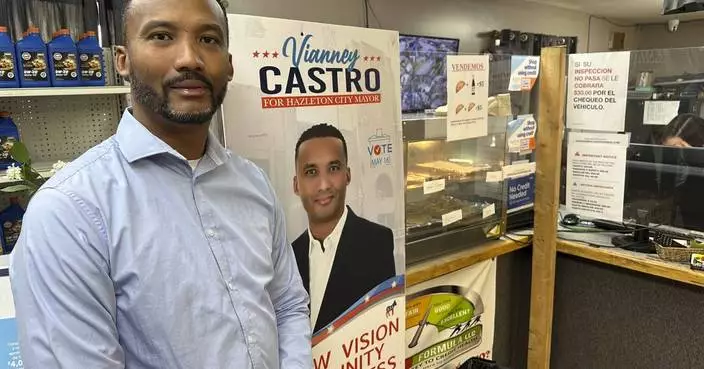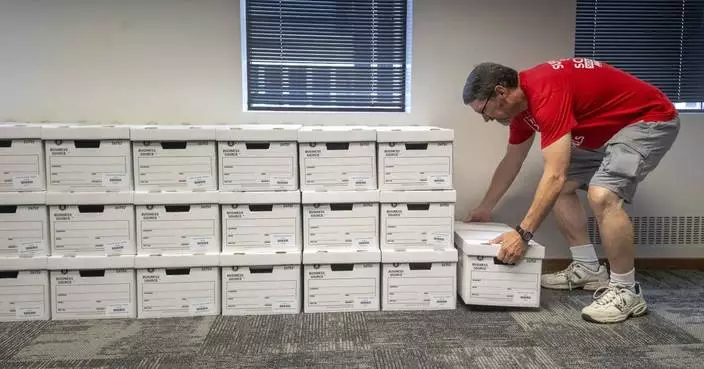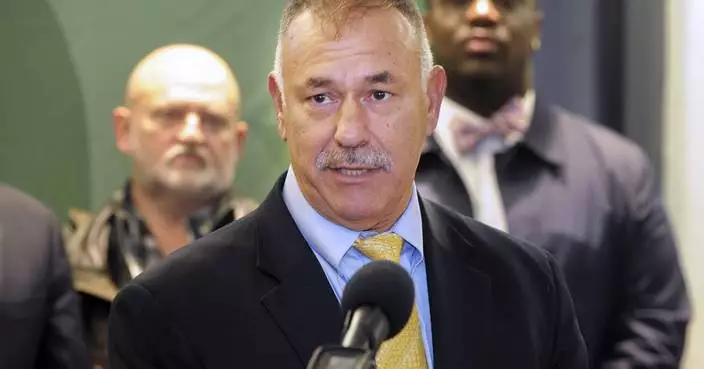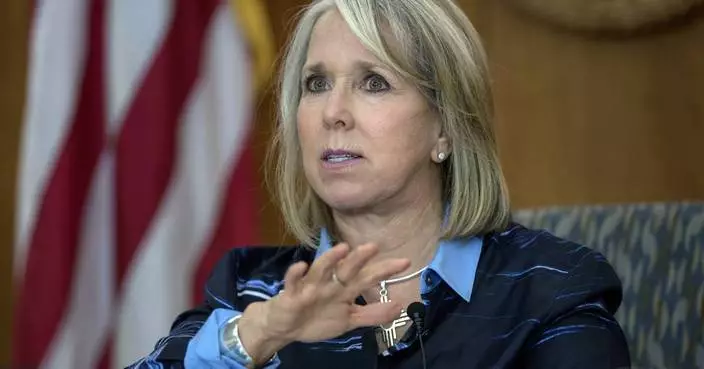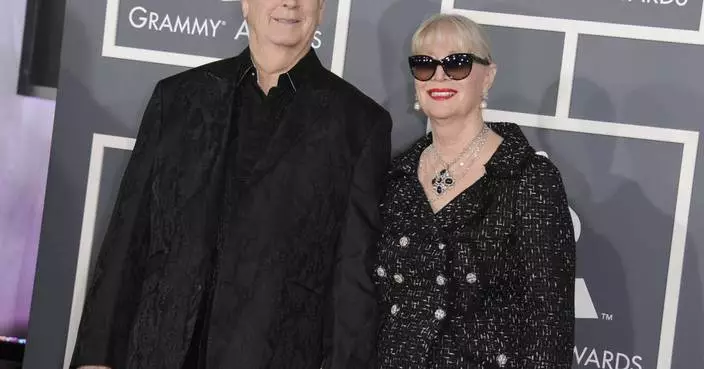The developer of a school shooting video game condemned by parents of slain children has lost the ability to sell its products online after being dumped by PayPal.

FILE - This file screen shot taken from YouTube shows a still frame from the video game "Active Shooter." Acid Software, the developer of the school shooting video game condemned by parents of slain children, has lost the ability to sell the game online after being dumped by PayPal. (YouTube via AP, File)
Acid Software said Tuesday that purchases of "Active Shooter" were "temporarily disabled" as its representatives tried to resolve the issues with PayPal. Acid's postings on Twitter and an online bulletin board included the hashtags "QuitCensoringUs," ''FreedomOfExpression" and "WeWillBeBack."
PayPal confirmed it closed the account.
"PayPal has a longstanding, well-defined and consistently enforced Acceptable Use Policy, and regardless of the individual or organization in question, we work to ensure that our services are not used to accept payments for activities that promote violence," the company, based in San Jose, California, said in a statement Wednesday.
"Active Shooter" is branded as a "SWAT simulator" that lets players choose between being an active shooter terrorizing a school or the SWAT team responding to the shooting. Players can choose a gun, grenade or knife, and civilian and police death totals are shown on the screen. Acid was selling an early version of the game online for $20 and plans to release a new version early next month.
Acid recently set up two websites for "Active Shooter" after the game was removed from the webpages of video game marketplace Steam and crowdfunding site Indiegogo. The removals followed complaints and online petitions by anti-gun violence advocates including parents of children killed in school shootings in Parkland, Florida, where 17 students and staff died in February, and Newtown, Connecticut, where 26 children and staff died in 2012.
A company that hosted the new websites removed them last week after receiving similar complaints. But Acid got the sites back up and running by switching to Russian servers, said an Acid representative, Ata Berdyev, of Seattle.
"Active Shooter" was created by Anton Makarevskiy, a 21-year-old developer from Moscow, Russia, and is being marketed by his entity Acid Software. Berdyev is helping Makarevskiy promote the game.
Berdyev said Wednesday that the future of the game could now be in doubt.
"Seems like everyone in US trying to censor us, whilst not explaining what exactly we are violating," Berdyev said in a message to The Associated Press.
Since first grade, Julian Morris, 16, has changed schools six times, swinging between predominantly white and predominantly Black classrooms. None has met all his needs, his mother said.
At predominantly white schools, he was challenged academically but felt less included. At predominately Black schools, he felt more supported as a Black student, but his mother, Denita Dorsey, said they didn't have the same resources and academic opportunities.
Seventy years after the Supreme Court ruled separating children in schools on the basis of race was unconstitutional, Dorsey said the options available to her family in Michigan are disappointing.
“Segregation is abolished, sure, but our schools are still deeply divided along racial and socioeconomic lines,” Dorsey said. “It makes you think: It’s been 70 years but was it worth it?”
The 1954 Brown v. Board of Education ruling and desegregation orders were only the first steps toward the elusive goal of equitable education. For some Black families, school choice has been critical in finding the best available option. And that has not meant necessarily the school with the most racial diversity.
Integration alone is not what Black families have pushed for over the decades, said Bernita Bradley of the National Parents Union, an education advocacy group.
“We wanted integration with accountability and that’s not what we received,” she said. “That’s why choice needs to exist but we still need high-quality options.”
Dorsey made what she called a “contentious decision” in 2022, choosing Saginaw High School in Michigan, which is predominantly Black, over Julian's predominantly white charter school.
“I was challenged, and I had arguments with family. But Julian is now getting more support from his teachers and administration than he ever did at his previous schools,” she said.
The Brown decision is seen as a key impetus to kicking off the modern school choice movement. As many white families began turning to private schools as a way to avoid the court mandate, state lawmakers — primarily in Southern states — began launching school voucher programs.
In Prince Edward County in Virginia, which closed all its public schools in 1959 for five years to evade integration, state and local officials gave white families tuition grants and tax credits to attend private schools. No similar options were provided to Black families. The move inspired other states to adopt similar schemes before they were deemed illegal by the Supreme Court.
The arguments for school choice evolved over time.
Some thinkers in the 1960s such as Milton Friedman argued that giving families money to spend on education how they saw fit would revolutionize education, incentivizing schools to improve or be left behind. At the same time, civil rights leaders stressed that choice could equalize education for lower-income families, which overwhelmingly include Black and Hispanic students.
Today, some of the loudest advocates for vouchers no longer approach it as a way to push for social justice, said Claire Smrekar, a professor of education and public policy at Vanderbilt University. Rather, the focus is on parents' rights and lifting restrictions that may prevent wealthier families from using the programs at schools of their choice.
“This expansion is really extraordinary when you think about it,” Smrekar said. “There are no social justice arguments here for families trapped in poverty and zoned for low-performing schools. The new argument is that everyone should enjoy this subsidy.”
Meantime, conservative attacks on how topics related to race and racism are taught in schools have only added to the appeal of alternatives for some Black families. Some schools dedicate themselves to affirming students' Black heritage, claiming the mantle of freedom schools that started during the Civil Rights Movement in response to the inferior education Black Americans were receiving in the South.
“All parents want is a safe and caring environment where their child is going to go and they are going to be a partner in my child’s pathway to success,” Bradley said.
Black families also turned to homeschooling in large numbers during the pandemic, driven in part by a desire to shield their children from racism in classrooms and to better meet the individual academic needs of their children.
American schools are more racially diverse today compared to the era of Brown v. Board, but schools have been re-segregating, with lasting academic consequences. Schools where students of color compose more than 90% of the student body are five times more likely to be located in low-income areas, where students have worse educational outcomes.
According to research from Stanford University’s Educational Opportunity Project, the recent increase in segregation appears to be partially driven by school choice. In school districts where charter schools expanded most rapidly in the last two decades, segregation grew the most.
In Michigan, Julian said he thought his mother was “tripping or just going off the rails” to pull him out of a higher-ranked school.
“It wasn’t until I arrived at Saginaw High that I took a second look back and realized that what was said to me and things that happened at the school were not OK,” Julian said. “I was different there because I am Black. But now at Saginaw, it feels more welcoming and I feel included and supported. I feel the difference.”
Janel Jones, a mother of two children in Atlanta, said she has seen the benefits of choice, having sent her 13-year-old daughter and 17-year-old son to seven different schools combined. But just giving parents an option is not enough, she said.
“School choice is not choice if it is not equitable. At the end of the day, liberation directly affects our economic outcome, and as parents we have to make sure these educational systems are challenging academically but also meet their needs as members of society,” Jones said.
It is not as simple as sending children to an all-Black school, she said.
“Your child is protected, but also coddled. You have not learned how to understand and deal with microaggressions you are guaranteed to face when you get your first job. That’s the educational part we as Black parents also have to teach our kids and that’s not going to change any time soon,” she said.
AP journalists Sharon Lurye in New Orleans and Jeff Amy in Atlanta contributed to this report.
The Associated Press’ education coverage receives financial support from multiple private foundations. AP is solely responsible for all content. Find AP’s standards for working with philanthropies, a list of supporters and funded coverage areas at AP.org.

Janel Jones poses with her son, Christian Jones, 17, on Friday, May 17, 2024, in Lawrenceville, Ga. Jones, a divorced veteran in Atlanta with two children, said though she has seen the benefits of choice having sent her 13-year-old daughter and 17-year-old son to seven different schools combined across the country, she feels at though just giving parents an option is not enough. (AP Photo/Mike Stewart)

Janel Jones poses with her son, Christian Jones, 17, on Friday, May 17, 2024, in Lawrenceville, Ga. Jones, a divorced veteran in Atlanta with two children, said though she has seen the benefits of choice having sent her 13-year-old daughter and 17-year-old son to seven different schools combined across the country, she feels at though just giving parents an option is not enough. (AP Photo/Mike Stewart)

Denita Dorsey poses with her son Julian Morris, 16, in Saginaw, Mich., Thursday, May 16, 2024. (AP Photo/Paul Sancya)

Denita Dorsey poses with her son Julian Morris, 16, in Saginaw, Mich., Thursday, May 16, 2024. (AP Photo/Paul Sancya)








